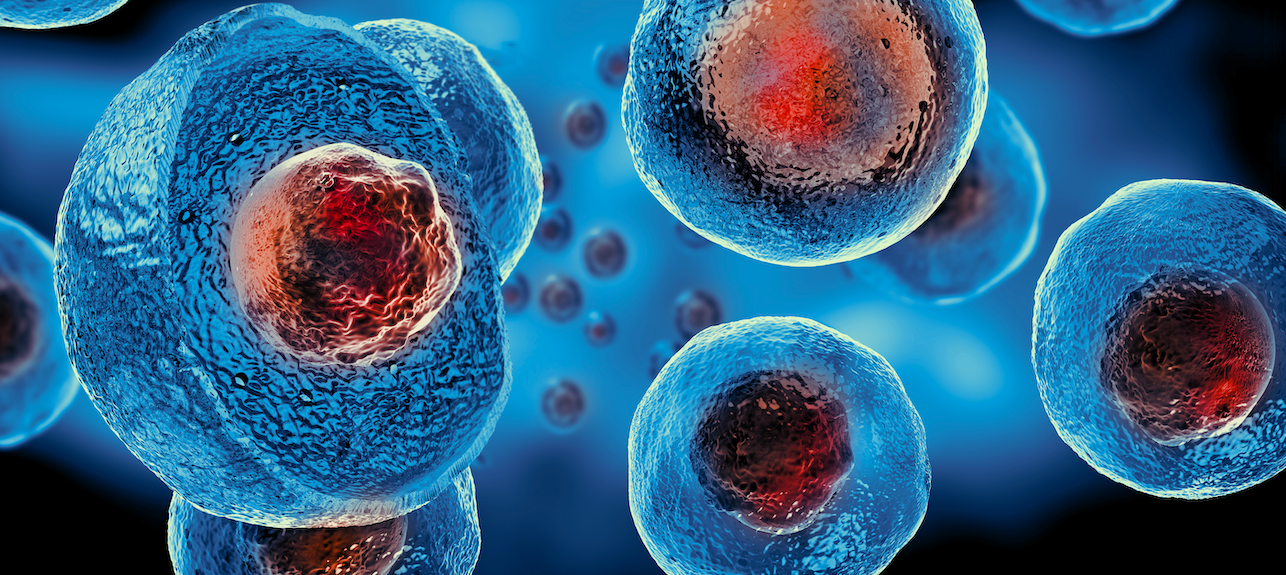|
|
||||||||||||||
|
Biological therapy (Immunotherapy) |

|
|||||||||||||
What are biological therapies? Biological agents aim to find chemical or genetic processes which are present in the cancer cell but not the normal cells. In this way they are more targeted than conventional chemotherapy which generally kills rapidly dividing cells. They can also have an anticancer effect by stopping the growth of new blood vessels into a tumour mass thus depriving it of oxygen and a means to grow and spread (angiogenesis). In general, biological therapies work by:
One of the first observations of an immunotherapy reaction was seen at the turn of the 20th century, when a patient's breast cancer shrunk following a severe skin infection. Her bodies defenses where so greatly stimulated to fight the infection they also attacked the tumour. There has been major strives to enhance this reaction by identifying specific tumour targets. Biological agents sometimes work in partnership chemotherapy. The chemotherapy kills the DNA and the biological agent stops the cells from repairing themselves. What are the main categories of biological agents? The two main categories of biological agents are: Tyrosine kinase inhibitors. These are small molecules which can interfere with the intracellular or extra cellular section of a biological protein which is involved in triggering various essential biological functions of the cell. Monoclonal antibodies (Mab). These are large natural proteins which are a normal part of the bodies defense against foreign organism. Although cancer cells come from our own bodies and hence not detected as foreign by our immune system there may be some supple difference which can be exploited in the immunity against them is enhanced. Antibodies are mass-produced in the lab by fusing a myeloma (a type of bone marrow cancer) cell from a mouse with a mouse B cell that makes a specific antibody. Because the antibodies are all identical clones produced from a single (mono) hybridoma cell, they are called monoclonal antibodies ( MAbs). In some cases, Mab can been congugated or joined to another substance which kills the tumour cells. This could be a chemotherapy drug, radioactive particle, or a toxin (a substance that poisons cells). Commonly available biological agents and mode of action? Monoclonal antibodies: Rituximab (MabThera): Non-Hodgkin’s lymphoma. Targets the CD20 antigen found in excess on lymphoma cells. extensively used in both low and high grade lymphomas as long as they are shown to over express CD20 proteins. Trastuzumab (Herceptin); Breast cancer. An intravenous agent, attacking the HER-2 receptor (activity is greatest in tumours also over expressing cMYC, PTEN or TOPO 11. Cetuximab (Erbitux); Colorectal cancer head and neck cancers; An intravenous inhibitor of erbB1(EGFR) k-ras mutations should not be present. Bevacizumab (Avastin); Breast and colorectal cancer plus others in development. An intravenous humanised Mab attaches to and inhibits vascular endothelial growth factor which then prevents new blood vessels forming in cancers (angiogenesis) Panitumumab; Colorectal cancer. A humanised mab against EGFR under investigation. Alemtuzumab (Campath): Chronic lymphocytic leukemia; Active against low grade lymphoma and CLL attacks the CD56 antigen. Ibritumomab tiuxetan (Zevalin) Non-Hodgkin’s lymphoma; A Mab which has a radioactive molecule attached to it shown activity in patients with low grade NHL transforming into higher grade tumours Tositumomab (Bexxar); Non-Hodgkin’s lymphoma; A Mab which has a radioactive molecule attached to it shown activity in low grade NHL. Tyrosine Kinase inhibitors: Gefitinib (Irissa); Lung & pancreas; Inhibits a mutated EGFR (p-Akt). Erlotinib (Tarceva): Lung & pancreas; Inhibits a mutated EGFR Imatinib (Gleevec); GIST & CML; An oral agent. Inhibits EGFR with the KIT mutation found in CML and gastrointestinal stromal tumours Lapatinib (Tyverb); Breast; An oral, dual inhibitor of EGFR (erbB1) & HER2 (ErbB2) Sunitinib (Sutent); Renal cell; An oral multi-targeted tyrosine kinase inhibitor with activity against vascular epidermal growth factor receptor (VEGFR), platelet derived growth factor receptor, KIT, RET and FLT3 having anti-tumour and anti-angiogenesis activity. Sorafeneib (Nexxava); Renal cell; An oral agent with multiple targets against the tryosine kinase inhibitor. Bortezomib (Velcade); Myeloma; Attacks a structure called the protosome. Preparation for biological therapy.As these are specific treatments your doctor needs to find out if your tumour expresses the necessary target before even considering treatment. This is usually achieved by re-analysing a section of your original tumour (from the time of your original surgery or biopsy). Occasionally, your doctor will need a more recent tumour for analysis and recommend a further biopsy. In either case the tumour is usually send to a lab which specialises in specific testing for antigens (targets) called immunohistochemistry. A report will be issued by the pathologist on whether your tumour over expresses the target and to what degree. For example, Herceptin treatment for breast cancer requires the tumour to be HER-2+ve and on a scale of 1-3 it should be 3 to ensure a likely subsequent clinical response. More recently it has been discovered that certain mutations within the cancer cell can predict a likely response to biological agents. For example, the K-ras and b-raf mutations found in 20% of cells from colorectal cancer, if present it means there will be little or no therapeutic response to Erbitux given to that patient. There is evidence that if you have a good gut health, exercise regularly and have a polyphenol rich diet you are less likely to get the side effects of immunotherapies. In addition you are morelikely to get a better and more sustained response. One study form MD Anderson reported a 30% better response to PD1 inhibitors. If you know you are going to need these drugs, it's really important to adopt measures to improve gut health, immunity and reduce chronic inflammation. In some cases this could be enhanced by taking a probiotic supplement. How are Mab administered? Most tryrosine tynase inhibitors are oral drugs taken once or twice a day. Mab on the other hand cannot be taken orally as they would be destroyed by your stomach. They are therefore infused into a vein usually over a few hours. Occasionally, as with all protein based drugs it is possible to get an allergic reaction. The nurses will therefore be checking how you are feeling and measuring your breathing, pulse and blood pressure blood regularly. If all goes well the infusion can last 1-2 hours, sometimes, in response to mild reaction, it may have to be slowed down over several hours. Rarely if there allergic reaction is prominent it has to be stopped altogether and abandoned. To avoid a mild reaction often paracetamol and an antihistamine are given before the infusion. If you are are able to tolerate the first infusion it will be repeated thereafter, either at the same or a lower dose, on regular intervals. The specific regimen (ie weekly, 3 weekly) will be explain to you by the doctors and nurses and depends on the specific Mab used. Mab are often given in conjunction will chemotherapy the administration schedule and side effect also depend on these drugs. Are there side effects to Mab therapy? There are some side effects in common with standard chemotherapy, but others which are very different. the side effects of naked MAbs are usually relatively mild. They can be broadly split into three categories:- The early effects often related to an "allergic" reaction. If they do occur, it is often while the drug is being infused or . Potential side effects include:
Particularly if associated with a fast pulse and lower blood pressure these symptoms indicate an early allergic reaction. As mentioned above if these symptoms are prominent the infusion has to be slowed down or abandoned altogether. To avoid a mild reaction often paracetamol and an antihistamine are given before the infusion. The ongoing effects may occurs over the entire period of time whilst you are receiving the Mab - usually weeks to months. these are usually worse a day or two after the infusion and could include:-
Late side effects may occur occur after receiving Mab for some time - usually months. These include heart & lung damage - they are rare but this is the reason why patients receiving prolonged Mab therapy have special monitoring including Heart test. |
||||||||||||||





